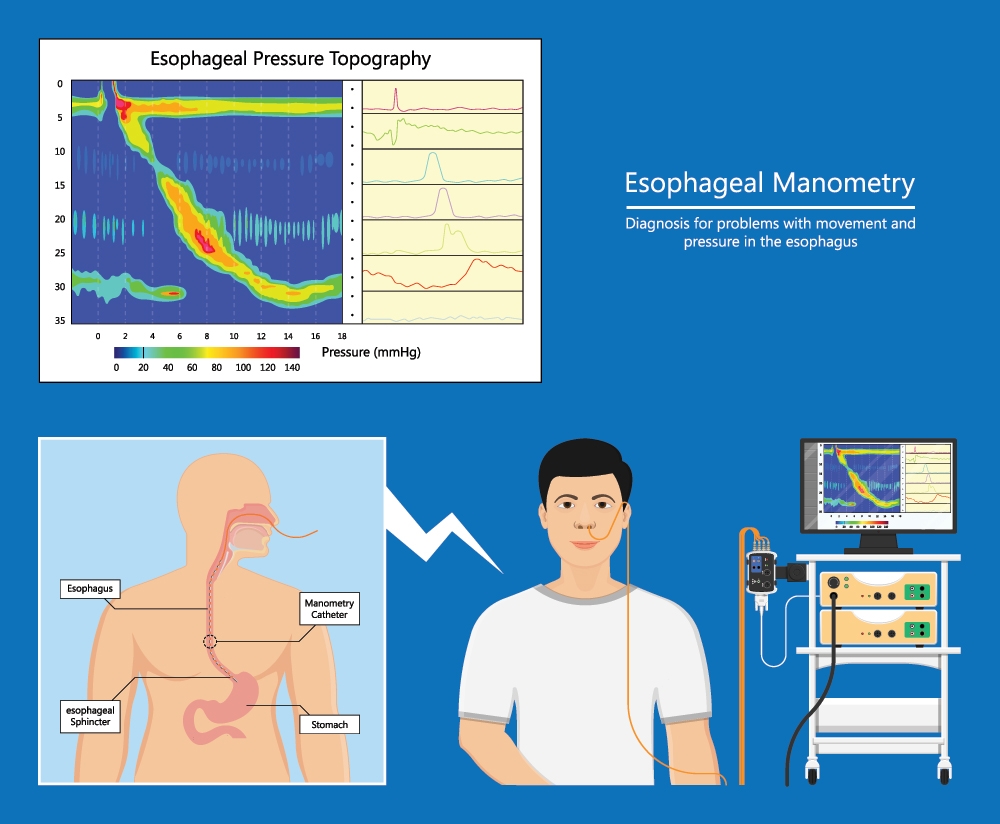procedures
pH/Impedance With Manometry
WHAT YOU SHOULD KNOW ABOUT PH/IMPEDANCE AND MANOMETRY
What is a ph/impedance and manometry?

pH/Impedance with manometry testing ordered by your doctor to quantify the amount of acid reflux you are having as well as to evaluate how well your esophagus’ motility (muscle contractions) work.
Why is a ph/impedance and manometry done?
pH/Impedance with manometry testing is an outpatient test that your doctor orders to evaluate various gastrointestinal disorders like acid reflux, difficulty swallowing (dysphagia), regurgitation, and non-cardiac chest pain. The test is also used prior to surgical repair of a hiatal hernia.
What preparations are required?
It is very important to stop eating and drinking at the times noted in your instructions. Please pay close attention to these instructions to avoid delaying or cancelling your procedure. Tell your doctor in advance about any medications you take since you might need to adjust your usual dose for the examination. Discuss any allergies to medications as well as medical conditions such as heart or lung disease.
Your doctor will decide ahead of time whether you are to take your proton-pump inhibitor (PPI) or H2 blocker during your test or to hold for 7 days prior to your procedure. Please review your procedure instructions 1 week ahead.
What happens during a ph/impedance and manometry?

First an esophageal manometry probe is placed through your nasal passage into your esophagus into your stomach. You will be asked to take several swallows of water which will allow recording various pressures and motility of the esophagus. Then the probe will stay in place for 24 hours to evaluate the amount of acid reflux. During this time the patient is asked to keep a food and event diary. You will record when you are laying down, sitting or standing upright and when you have various symptoms like chest pain, cough, reflux events and heartburn.
It is important that during this 24 hour period of testing you do your normal daily activities as much as possible to achieve an accurate test.
What happens after ph/impedance and manometry?
After the 24 hour period of recording the patient will return the data recorder and the probe will be removed. The data will be downloaded and reviewed by your doctor in 2-3 weeks.
What are possible complications?
Although complications can occur, they are rare when doctors specially trained and experienced in this procedure perform the test. There is a possibility of chest pain, difficulty swallowing, nausea or vomiting. There is also a possibility of nose bleeds.
If you have any concerns about a possible complication, contact your doctor right away.